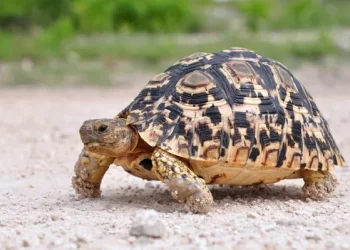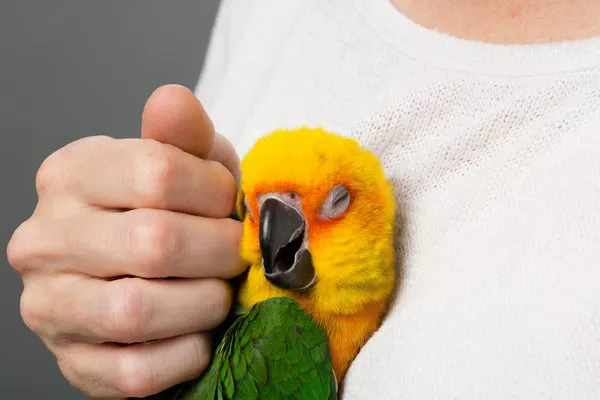Tortoises are fascinating reptiles, beloved by many for their slow-moving nature and unique characteristics. These creatures have specific environmental needs, particularly concerning temperature, which is crucial for their overall health and well-being. Understanding how to identify if your tortoise is too cold is essential for any tortoise owner. This article will delve into the species characteristics, living habits, and signs indicating that your tortoise might be too cold, along with tips to ensure their environment is optimal.
Species Characteristics
Physical Attributes
Tortoises are land-dwelling reptiles distinguished by their sturdy, dome-shaped shells, which serve as protection against predators. They possess strong, sturdy legs adapted for walking on land, unlike their aquatic cousins, the turtles. The shell comprises two parts: the carapace (upper shell) and the plastron (lower shell), both made of bony plates covered by scutes. These reptiles come in various sizes, colors, and patterns, depending on the species.
Natural Habitat
Tortoises are found in diverse environments across the globe, from deserts and grasslands to tropical forests. Their natural habitat influences their specific temperature needs. For instance, desert tortoises, such as the African spurred tortoise (Geochelone sulcata), are accustomed to hot, arid climates, while forest-dwelling species like the red-footed tortoise (Chelonoidis carbonaria) thrive in more humid conditions.
Behavioral Traits
Tortoises are known for their slow movements and long lifespans, with some species living over 100 years. They are generally herbivorous, feeding on a diet of leafy greens, vegetables, and occasional fruits. Tortoises are also known for their burrowing behavior, which they use to escape extreme temperatures in the wild.
Living Habits and Environmental Needs
Temperature Regulation
Tortoises are ectothermic, meaning they rely on external heat sources to regulate their body temperature. Maintaining an appropriate temperature gradient in their enclosure is crucial for their metabolic processes, digestion, and overall health. Typically, tortoises require a basking area with temperatures ranging from 90-100°F (32-38°C) and a cooler area around 70-75°F (21-24°C). Nighttime temperatures can safely drop to 65-70°F (18-21°C), but prolonged exposure to temperatures below this range can be detrimental.
Light and Humidity
In addition to heat, tortoises need access to UVB lighting, which is essential for synthesizing vitamin D3 and absorbing calcium. Without adequate UVB exposure, tortoises can develop metabolic bone disease, leading to severe health issues. Humidity requirements vary by species, with desert tortoises needing lower humidity levels (20-30%) and tropical species requiring higher humidity (60-80%).
Shelter and Substrate
Providing appropriate shelter and substrate is essential for replicating a tortoise’s natural habitat. Shelters such as hides or burrows offer protection and a place to retreat when the tortoise needs to regulate its body temperature. Suitable substrates include soil, coconut coir, and cypress mulch, which allow for natural digging and burrowing behaviors.
Signs Your Tortoise Is Too Cold
Lethargy and Inactivity
One of the most apparent signs that your tortoise is too cold is a noticeable decrease in activity levels. Tortoises that are too cold may become lethargic and spend more time hiding in their shelters. They may also move slowly and appear less responsive to stimuli.
Reduced Appetite
Cold temperatures can significantly impact a tortoise’s metabolism, leading to a reduced appetite or complete refusal to eat. If your tortoise is not interested in food or eating less than usual, it could be a sign that their environment is too cold.
Digestion Issues
Proper digestion requires an optimal body temperature. If a tortoise is too cold, it may have difficulty digesting food, leading to issues such as bloating, constipation, or undigested food in their stool.
Respiratory Problems
Cold temperatures can weaken a tortoise’s immune system, making them more susceptible to respiratory infections. Symptoms of respiratory issues include nasal discharge, wheezing, and labored breathing. If you notice these signs, it is crucial to warm your tortoise’s environment and seek veterinary care.
Shell and Skin Conditions
Prolonged exposure to cold can lead to skin and shell problems. You might observe dry, flaky skin or changes in the appearance and texture of the shell. These conditions can be exacerbated by a lack of proper humidity and UVB exposure.
Behavioral Changes
Tortoises that are too cold may exhibit unusual behaviors such as excessive burrowing or attempting to escape their enclosure. These behaviors are often a response to discomfort and an effort to find a warmer environment.
Ensuring Optimal Temperature for Your Tortoise
Creating a Temperature Gradient
To maintain the proper temperature range in your tortoise’s enclosure, create a temperature gradient with a basking area and a cooler area. Use a heat lamp or ceramic heat emitter for the basking spot, ensuring it reaches the necessary 90-100°F (32-38°C). Monitor temperatures using digital thermometers placed at different locations within the enclosure.
See Also: How Often Should I Bathe My Horsefield Tortoise?
Providing UVB Lighting
UVB lighting is essential for your tortoise’s health. Install a UVB bulb specifically designed for reptiles and position it within 12-18 inches of the basking area. Replace the bulb every six months, as UVB output diminishes over time even if the bulb still emits visible light.
Adjusting Nighttime Temperatures
While it’s normal for temperatures to drop at night, ensure they do not fall below 65°F (18°C). If necessary, use a ceramic heat emitter or a heating pad designed for reptiles to maintain appropriate nighttime temperatures.
Monitoring Humidity Levels
Keep humidity levels appropriate for your tortoise’s species by using a hygrometer to monitor the enclosure. Increase humidity by misting the enclosure or adding a humidity box filled with moist substrate. For desert species, ensure there are areas with lower humidity to prevent respiratory issues.
Seasonal Adjustments
In colder months or climates, additional measures may be necessary to maintain optimal temperatures. Consider using space heaters, insulating the enclosure, or moving it to a warmer part of your home. Always ensure that any heating equipment used is safe and does not pose a fire risk.
Preventative Measures and Regular Checks
Routine Health Checks
Regularly check your tortoise for signs of health issues, including changes in behavior, appetite, and physical condition. Early detection of problems can prevent more serious health issues down the line.
Veterinary Care
Schedule annual veterinary check-ups for your tortoise to ensure they remain healthy and to catch any potential issues early. A reptile-savvy veterinarian can provide guidance on proper care and address any concerns you may have.
Enclosure Maintenance
Keep your tortoise’s enclosure clean and well-maintained. Regularly clean and disinfect water dishes, replace soiled substrate, and remove uneaten food to prevent bacterial growth and infections.
Educating Yourself
Stay informed about your tortoise’s specific needs and care requirements. Join online forums, read reputable care guides, and consult with other tortoise owners to share knowledge and experiences.
Conclusion
Understanding how to determine if your tortoise is too cold and taking appropriate measures to maintain their ideal environment is crucial for their health and well-being. By providing the right temperature, humidity, lighting, and habitat conditions, you can ensure that your tortoise thrives. Regular monitoring, preventative care, and a commitment to learning about your tortoise’s needs will help you create a safe and comfortable home for your shelled companion.
Related Topics:

























